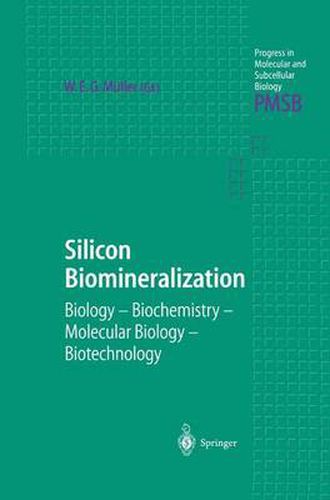Readings Newsletter
Become a Readings Member to make your shopping experience even easier.
Sign in or sign up for free!
You’re not far away from qualifying for FREE standard shipping within Australia
You’ve qualified for FREE standard shipping within Australia
The cart is loading…






This title is printed to order. This book may have been self-published. If so, we cannot guarantee the quality of the content. In the main most books will have gone through the editing process however some may not. We therefore suggest that you be aware of this before ordering this book. If in doubt check either the author or publisher’s details as we are unable to accept any returns unless they are faulty. Please contact us if you have any questions.
During evolution silica deposition has been used in Protozoa, Metazoa and in plants as skeletal elements. It appears that the mechanisms for the formation of biogenic silica have evolved independently in these three taxa. In Protozoa and plants biosilicification appears to be primarily driven by non-enzymatic processes and procedes on organic matrices. In contrast, in sponges (phylum Porifera) this process is mediated by enzymes; the initiation of this process is likewise dependent on organic matrices.
In this monograph the role of biosilica as stabilizing structures in different organisms is reviewed and their role for morphogenetic processes is outlined. It provides an up-to-date summary of the mechanisms by which polymeric biosilica is formed. The volume is intended for biologists, biochemists and molecular biologists, involved in the understanding of structure formation in living organisms and will also be very useful for scientists working in the field of applied Nanotechnology and Nanobiotechnology.
$9.00 standard shipping within Australia
FREE standard shipping within Australia for orders over $100.00
Express & International shipping calculated at checkout
This title is printed to order. This book may have been self-published. If so, we cannot guarantee the quality of the content. In the main most books will have gone through the editing process however some may not. We therefore suggest that you be aware of this before ordering this book. If in doubt check either the author or publisher’s details as we are unable to accept any returns unless they are faulty. Please contact us if you have any questions.
During evolution silica deposition has been used in Protozoa, Metazoa and in plants as skeletal elements. It appears that the mechanisms for the formation of biogenic silica have evolved independently in these three taxa. In Protozoa and plants biosilicification appears to be primarily driven by non-enzymatic processes and procedes on organic matrices. In contrast, in sponges (phylum Porifera) this process is mediated by enzymes; the initiation of this process is likewise dependent on organic matrices.
In this monograph the role of biosilica as stabilizing structures in different organisms is reviewed and their role for morphogenetic processes is outlined. It provides an up-to-date summary of the mechanisms by which polymeric biosilica is formed. The volume is intended for biologists, biochemists and molecular biologists, involved in the understanding of structure formation in living organisms and will also be very useful for scientists working in the field of applied Nanotechnology and Nanobiotechnology.